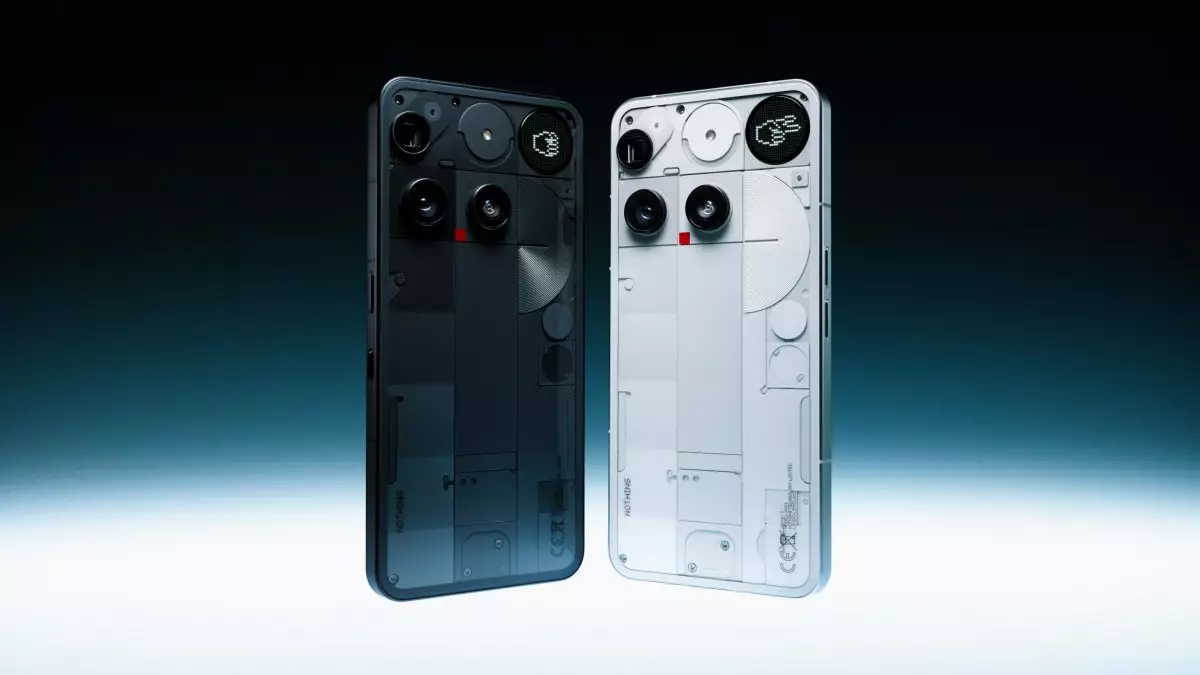After a challenging two-year hiatus, Nothing has re-emerged with a renewed sense of purpose and a bold new flagship—the Phone (3). This device isn’t just another addition to the crowded Android market; it stands as a testament to the company’s ambition to redefine smartphone aesthetics and functionality. Entering the scene at a pivotal moment in 2025, Nothing’s strategy revolves around blending innovative design with meaningful features, rejecting the complacency of industry giants to carve out a unique niche. The Phone (3) isn’t simply a device for right-now; it aims to challenge perceptions, elevate user experience, and demonstrate that a smartphone can be both functional and artful.
Breaking the Mold: Design That Defies Convention
One of the most striking aspects of the Phone (3) is its unapologetically unconventional design. Since its inception, Nothing has prioritized transparency, creating a distinctive visual identity that sets it apart from traditional smartphones. Continuing this legacy, the Phone (3) features a transparent back, but with a twist: a novel camera arrangement that disrupts the usual alignment norms. Instead of symmetrical, predictable positioning, the cameras assemble in an asymmetrical structure, which might irritate those who prefer order but signals a bold move away from industry norms.
Furthermore, Nothing surpasses previous efforts by replacing the familiar LED notification setup—Glyph—with a compact circular mini-LED screen dubbed Glyph Matrix. This addition isn’t merely aesthetic; it’s a functionally richer interface, capable of displaying sophisticated 16-bit patterns and interactive mini-apps like spinning a bottle or playing rock-paper-scissors. The company’s focus on visual cues and engagement embodies a broader principle: that a smartphone can be a canvas for expressive display and personal interaction, merging hardware artistry with software ingenuity.
Innovating with Intelligence: AI Features as Differentiators
In 2025, a smartphone without AI is almost obsolete—Nothing recognizes this and integrates intelligent features as core components of the Phone (3). Notably, the device introduces “Essential Space,” an upgraded app that extends beyond basic note-taking. Now, it can record meetings and generate AI-powered transcriptions and summaries, streamlining professional and personal workflows. While the idea is promising, the execution reveals gaps—lacking a web interface limits accessibility for users who prefer managing data remotely or on desktops, a hurdle that could dampen its overall usefulness.
Complementing this is “Essential Search,” a feature reminiscent of Apple’s Spotlight but infused with ChatGPT-style AI capabilities. It offers a more intuitive way to locate files, settings, and photos through natural language input, and even extends searches to web results, making the phone’s data ecosystem smarter and more accessible. These features are not merely add-ons but signal a shift toward blending AI into the core of smartphone interaction, aligning with broader industry trends but executed with a distinctive, user-centric approach.
Performance and Hardware: Competing at the Highest Level
While innovative design and AI features draw subjective praise, the Phone (3) does not compromise on raw hardware power—an essential factor for competing in the flagship arena. Equipped with a 6.67-inch AMOLED display protected by Gorilla Glass 7i, the device offers vibrant visuals with a 1.5K resolution. Powered by Qualcomm’s Snapdragon 8 Gen 4 processor, built on a cutting-edge 4-nanometer architecture, the Phone (3) promises robust performance across demanding tasks.
Its camera system underscores the device’s premium ambitions: three 50-megapixel sensors deliver versatile shooting options—from the large-sensor main camera to a 3x optical zoom telephoto lens, and an ultra-wide field of view. The selfie camera, upgraded to 50 megapixels, indicates Nothing’s commitment to content creation. The battery life isn’t overlooked either; a substantial 5,150 mAh (or 5,500 mAh in the Indian variant) paired with fast wired and wireless charging ensures the phone remains reliable throughout demanding days.
Pricing and Market Position: Challenging the Giants
Positioned directly against industry heavyweights like the Samsung Galaxy S25, the Phone (3) is competitively priced—$799 for the 256GB version and $899 for the 512GB variant. Such pricing underscores Nothing’s confidence; it’s daring to challenge established brands without significant compromises. Preorders beginning July 4, with general availability from July 15, reflect a strategic rollout designed to make noise and attract attention.
However, the real question isn’t just about specs or price but about whether consumers are ready to embrace a device that’s unapologetically different. The $799 starting point places the Phone (3) in the premium segment, an arena where brand loyalty, ecosystem integration, and innovative features often decide success. The company’s decision to make the device broadly available in the U.S. via its website and Amazon signals an ambition to scale beyond niche markets and solidify its place in the competitive flagship segment.
The Promise of the Future: A Risky but Necessary Bet
Ultimately, the Phone (3) is more than just a smartphone; it’s an assertion of design philosophy and technological confidence. Nothing’s willingness to innovate—by challenging aesthetic norms, integrating AI deeply into user workflows, and offering a competitive hardware package—underscores a fundamental belief: that users crave devices that are as expressive and intelligent as they are powerful.
Yet, the journey from bold concept to mass acceptance is riddled with uncertainties. The niche appeal of asymmetrical camera layouts, the novelty of AI-driven features with limited remote accessibility, and pricing that puts it directly against entrenched giants all pose challenges. Still, it’s a brave step, and in a marketplace that often values safety over innovation, Nothing’s daring to stand apart could either propel it into the spotlight or remind everyone that standing out demands not just creative vision but relentless execution.

